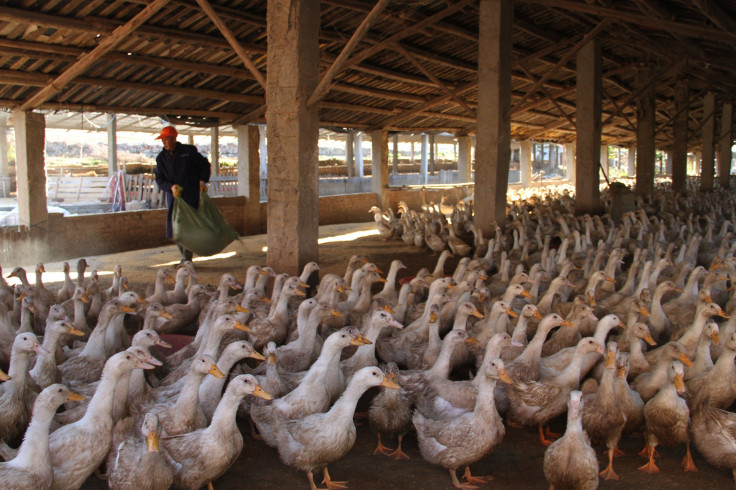Chinese Bird Flu Virus Threatens To Become Deadly Disease X Pandemic

A deadly strain of bird flu was detected in Chinese poultry, which is capable of starting a worldwide influenza pandemic.
The existence of the disease was first drawn to the public’s attention by Professor Jonathan Van-Tam, deputy chief medical officer for England, who said that H7N9, a flu virus circulating in poultry in China, should be a cause for concern for all people alike, as it kills 38 percent of those who get infected by it.
“[H7N9] is an example of another virus which has proven its ability to transmit from birds to humans. It’s possible that it could be the cause of the next pandemic,” he said, the Telegraph reported.
Also, the mortality rate of the virus is likely to change if it happens to become a pandemic in the future, Van-Tam predicted.
“Mortality is about 38 per cent of known cases, higher than any of the human pandemic viruses. But it would be wrong to think we could have a pandemic virus in future that could kill 38 per cent of people. It would change,” he said.
Van-Tam added that British government is conducting in-depth research on the virus in an attempt to find out the best method to tackle it and stop it from becoming a global threat. As part of the research, the government is trying to gather intelligence on its geographic spread, number of humans it has infected and monitoring changes in its genetic structure.
The growing concern regarding the Chinese bird flu comes amid stark warnings from the World Health Organization (WHO) regarding something called “Disease X” — a mysterious and yet undiscovered pathogen that could present itself at any time in the near or distant future causing a worldwide pandemic and eradicating mankind as we know it.
Disease X could be a mutation of an already known disease, such a strain of the flu, an infection transmitted from animals to humans or a virus created by humans in labs, WHO claimed, when it added the unknown disease to its annual list of up to 10 “blueprint priority diseases.”
The basis of drawing people’s attention to Disease X is to acknowledge that outbreaks do not always come from an identified source and to prevent an outbreak like the 1918 Spanish flu which killed between 50 and 100 million people a century ago.
However, there hasn’t been any indication from WHO to suggest that the Chinese bird flu could become Disease X. Here are the facts that are known about H7N9 so far:
1. Its initial symptoms in humans include high fever, cough, shortness of breath and pneumonia. In severe cases, the lungs are incapable of providing the body with enough oxygen and as a result, acute respiratory distress syndrome occurs. This eventually leads to septic shock and multi-organ failure.
2. The people who are most likely to develop the severe form of the disease after contracting the virus were pregnant women and the aged.

3. This strain of bird flu was closely related to H5N1, a type A bird flu which crossed into humans in 2003.
“H5N1 was first isolated in 1997 and has had 19 years to float around. It’s had its chance to cause a worldwide pandemic but it looks like it’s not going to do it. But H7N9 is younger and stronger and is now waiting for its opportunity,” John Oxford, professor of virology at Queen Mary University of London, said.
4. So far 1,625 people in China have been reportedly infected with the H7N9 virus and 623 of them have died. Most of the people who were infected had come in some form of contact with the poultry market.
5. Although it is difficult to assess when the virus was first detected among birds, it showed up in humans back in 2013.
6. The present strain of the virus is not contagious. However, scientists have determined through experiments on animals that it was just three mutations away from being transferable from one human to another.
7. In the winter of 2016-17, there were 460 cases of H7N9 among humans – the highest in the last five. Only three cases of the virus were reported this year.
© Copyright IBTimes 2024. All rights reserved.





















